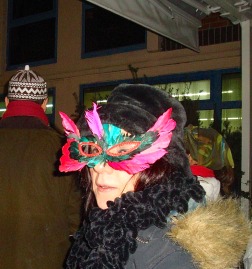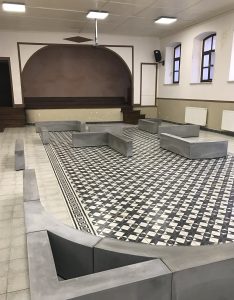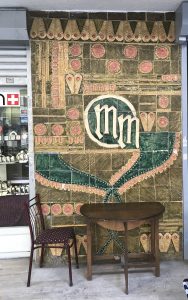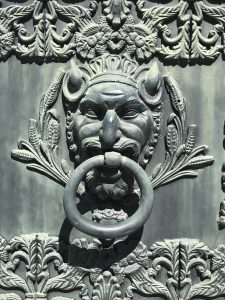Old name: Tatavla
Tucked away at the back of Şişli, Kurtuluş is not the sort of place most visitors to İstanbul ever discover. Certainly it has no major monuments to draw them although it does boast a surprisingly large collection of 19th-century churches and some imposing 19th and early 20th-century domestic architecture especially along Kurtuluş Caddesi.
The one time that you might certainly want to pencil in a visit is during Lent when an old carnival, long in abeyance, has been brought back to life, albeit in somewhat mutated form. However, it is not certain that the revival will have survived the Covid pandemic so check before making a special trip.
Backstory
Kurtuluş might not appear to have anything much in common with Ayvalık on the Aegean coast but in the late 18th century these were the only two settlements in what is now Turkey that were allowed to be Greek-only enclaves.
The first Greek residents of what was originally called Tatavla were early 16th-century islanders who had been seized to provide a workforce for the new Ottoman shipyards of Kasımpaşa. There they set up a church which was taken from them and turned into a mosque whereupon they retreated up the hill above their workplace to set up a new community centred on the Church of St Demetrios. Two hundred years later in 1793 Tatavla was granted the right to turn away non-Greek residents.
Still today in Ayvalık you can feel that past difference. However, modern Kurtuluş has so completely thrown off its Greek heritage that only the Despina restaurant and the two churches, one of them in ruins, seemed to recall it until the old Lent carnival was recently revived, albeit in Turkified form. 
Around Kurtuluş
The best place to start exploring is Safa Meydanı (Square) where Hagios Demetrios overlooks the bus terminal. The current building dates back to 1726 but is mainly a 19th-century rebuild. You are unlikely to be able to see anything more than the narthex and the pretty garden.
Just round the corner from the church is the old schoolhouse associated with it. It is now used for occasional temporary art exhibitions. Continue walking down past the school and, in a small square, you’ll find the pretty hexagonal Mihrişah Valide Sultan Çeşmesi (fountain), dating from 1799.
 If you walk downhill in search of Omuzdas Sokak you will find both the old Greek cemetery and then the enormous brooding hulk of Hagios Eleftherios which dates back to 1855 and is as impressive architecturally as Hagia Triada, off İstiklal Caddesi. But its fate could hardly stand in sharper contrast because although Hagia Triada has been restored and is reasonably accessible to visitors Hagios Eleftherios is locked up and slowly crumbling.
If you walk downhill in search of Omuzdas Sokak you will find both the old Greek cemetery and then the enormous brooding hulk of Hagios Eleftherios which dates back to 1855 and is as impressive architecturally as Hagia Triada, off İstiklal Caddesi. But its fate could hardly stand in sharper contrast because although Hagia Triada has been restored and is reasonably accessible to visitors Hagios Eleftherios is locked up and slowly crumbling.
If you walk along Kurtuluş Caddesi admiring the old apartment blocks you will arrive eventually at the cemeteries in Feriköy.
Eating
Madam Despina Meyhanesi Named after its erstwhile Gökçeada-born Greek owner, Despina’s is the place to come for a meyhane-style night out with great food, especially mezes, great music and glorious views of the Golden Horn from on high. It is one of istanbul’s oldest meyhanes although from the outside you’d be hard-pressed to guess it. Açıkyol Sokak No. 9, Tel: 0212-247 3357
Matild Manukyan (1914-2001) was a brothel-keeper of Armenian descent who was Turkey’s highest tax payer for five years in a row in the 1990s. Her house on Kurtuluş Caddesi is marked with a striking ceramic panel.
 Transport info
Transport info
Kurtuluş can be reached by bus from Taksim although you can also walk there from the Metro station at Osmanbey which is one stop away from Taksim.
Nearby areas
Read about the revived Baklahorani Carnival/Tatavla Carnival: http://www.turkeyfromtheinside.com/blogbloggingaboutturkey/entry/2-the-revived-kurtuluu015f-carnival.html



